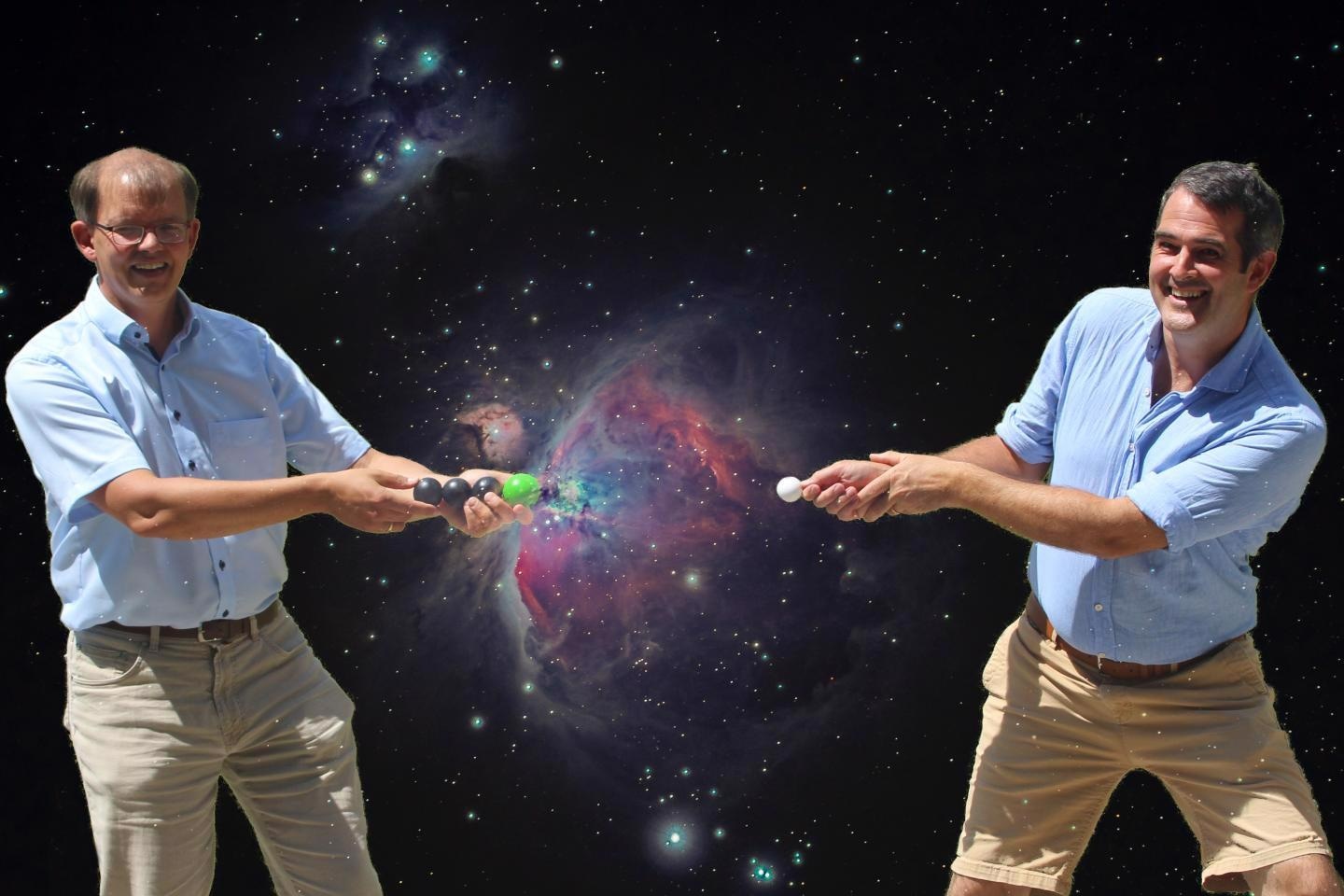Interstellar clouds are places where new stars are born, but they also have a vital role in the origins of life in the Universe via regions of dust and gas in which chemical compounds are developed.
 Physicists Roland Wester (left) and Malcolm Simpson (right) demonstrate how dipole-bound states allow negative ions to form in interstellar clouds. Image Credit: Bryan Goff on Unsplash / AG Wester.
Physicists Roland Wester (left) and Malcolm Simpson (right) demonstrate how dipole-bound states allow negative ions to form in interstellar clouds. Image Credit: Bryan Goff on Unsplash / AG Wester.
The molecular systems research team, headed by ERC prize winner Roland Wester at the Institute for ion physics and applied physics at the University of Innsbruck, seeks to better comprehend the development of elementary molecules present in space.
Put simply, our ion trap allows us to recreate the conditions in space in our laboratory. This apparatus allows us to study the formation of chemical compounds in detail.
Roland Wester, Institute for Ion Physics and Applied Physics, University of Innsbruck
Currently, researchers in collaboration with Roland Wester have come up with an explanation for how negatively charged molecules are developed in space.
An Idea Built on Theoretical Foundations
It was considered that interstellar clouds contained only positively charged ions before the first negatively charged carbon molecules were discovered in space in 2006. From then on, it has been an unresolved question as to how negatively charged ions form.
Franco A. Gianturco, an Italian theorist, has been working as a researcher at the University of Innsbruck for eight years. He developed a theoretical framework a few years ago that could offer a proper explanation.
The occurrence of dipole-bound states, or weakly bound states, should improve the binding of free electrons to linear molecules. These molecules exhibit a permanent dipole moment which reinforces the interaction at a comparatively great distance from the neutral nucleus and increases the capture rate of free electrons.
Observing Dipole-Bound States in the Laboratory
Through the experiment, the physicists from Innsbruck have developed molecules containing one nitrogen atom and three carbon atoms, then ionized them, and bombarded them with laser light in the ion trap at very low temperatures.
The frequency of light was constantly altered until the energy was sufficiently large enough to remove an electron from the molecule. This photoelectric effect was explained by the great scientist Albert Einstein 10 decades ago.
A detailed analysis of the measurement data performed by the early-stage researcher Malcolm Simpson from the doctoral training program — Atoms, Light and Molecules — at the University of Innsbruck eventually offered new insights into this hard to observe phenomenon.
Ultimately, data comparison with a theoretical model offered clear proof regarding the presence of dipole-bound states.
Our interpretation is that these dipole-bound states represent a kind of door opener for the binding of free electrons to molecules, thus contributing to the creation of negative ions in space. Without this intermediate step, it would be very unlikely that electrons would actually bind to the molecules.
Roland Wester, Institute for Ion Physics and Applied Physics, University of Innsbruck
The study was financially supported by the Austrian Science Fund FWF, which also funds the PhD program Atoms, Light and Molecules (ALM) at the University of Innsbruck.
Journal Reference:
Simpson, M., et al. (2021) Influence of a Supercritical Electric Dipole Moment on the Photodetachment of C3N−. Physical Review Letters. doi.org/10.1103/PhysRevLett.127.043001.